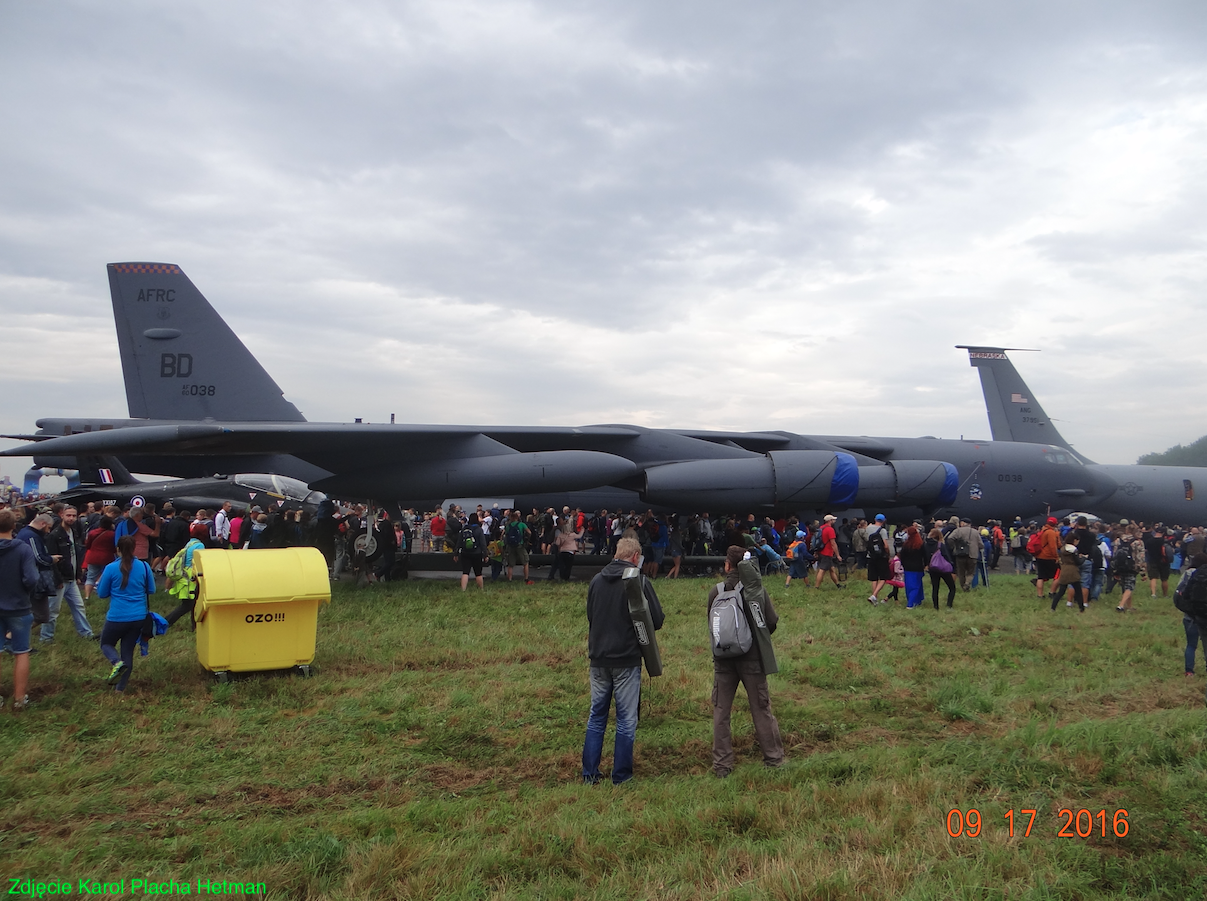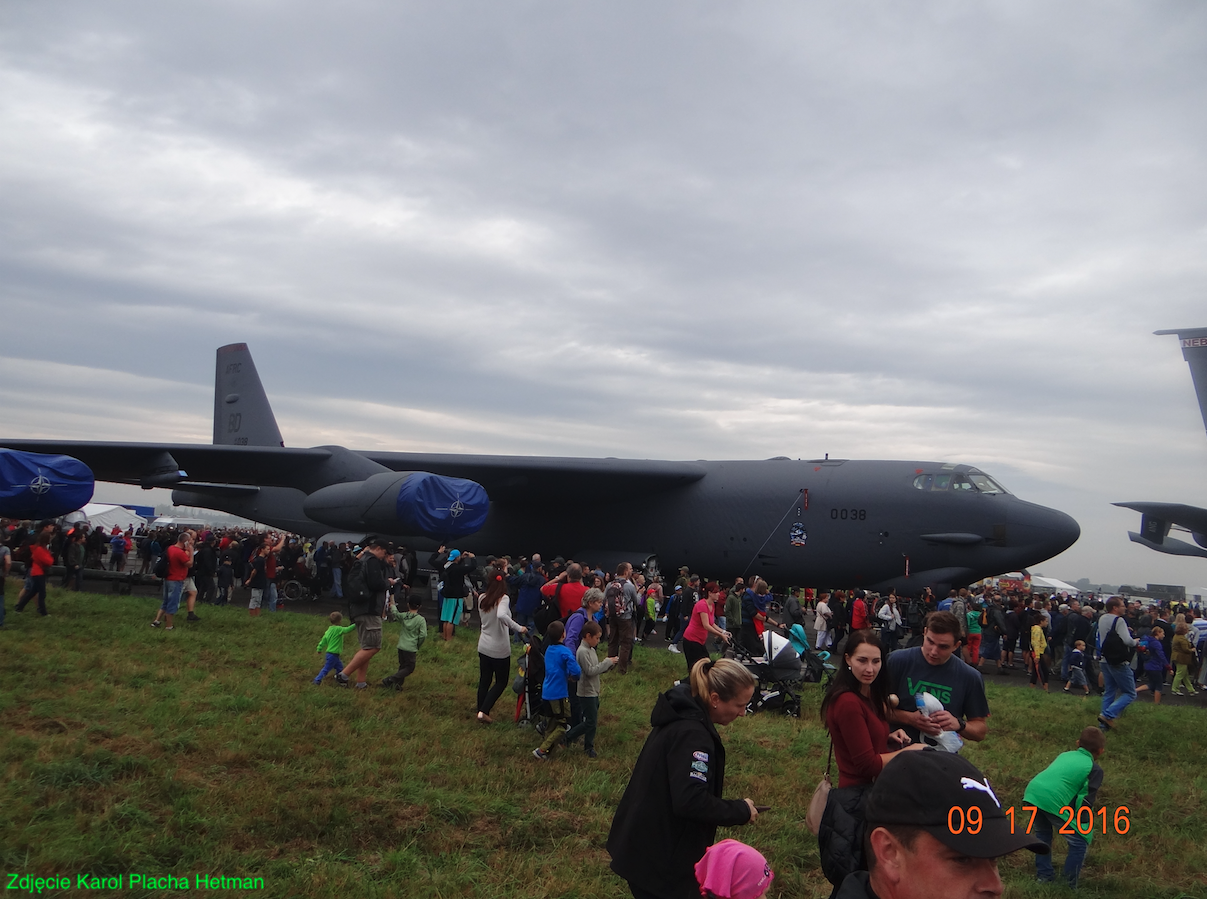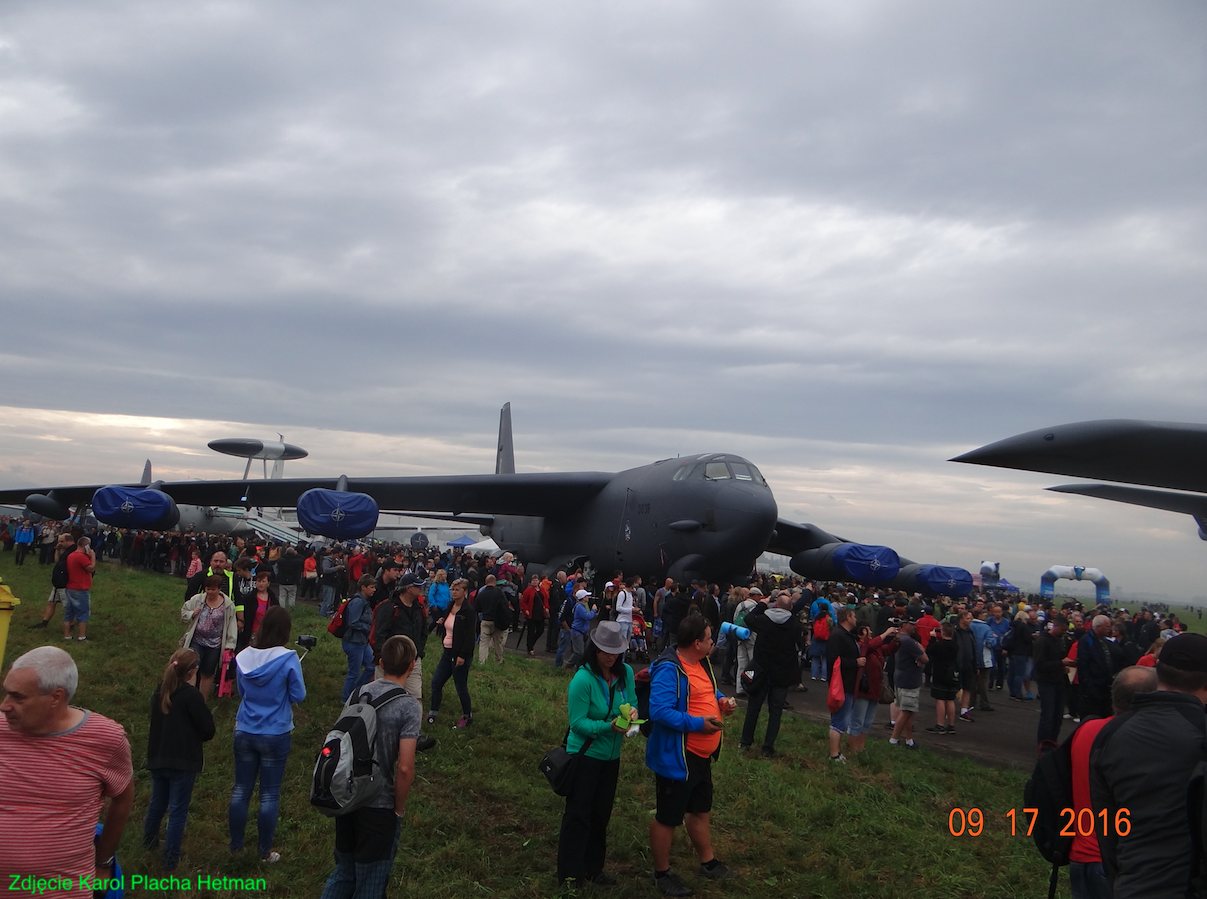Warszawa 2023-03-28
Boeing B-52 intercontinental bomber.
The American Boeing B-52 bomber is an older generation aircraft, which, however, thanks to its durable construction, armament load and range, is still a significant strike force of the USAF. Since the accession of the Republic of Poland to NATO on March 12, 1999, B-52 aircraft have played an important role in deterring the bandit activities of the Moscow state.
Work on the future B-52 bomber was started by Boeing in 1946. The aircraft was developed under the corporate designation Model 426. Initially, the designers planned to duplicate the concepts of the B-29 bomber. The new aircraft was planned to be built with straight wings, equipped with 6 turboprop engines. In the following years, the project underwent a gradual transformation. Ultimately, slanted wings were used, with a slant angle of 35 degrees. The issue of propulsion was settled with the development of the successful J-57 turbojet engines from Pratt-Whitney.
It should be mentioned that in parallel, Convair was developing a competing bomber YB-60, which was based on the B-36 design, but like the B-52, it was equipped with swept wings and 8 turbojet engines.
Finally, a contract was signed for the construction of the XB-52 prototype, designated by Boeing Model 464-67. The prototype was powered by 8 Pratt-Whitney YJ57-P-3 engines with a thrust of 8 x 38.71 kN. The flight crew consisted of 5 pilots; 2 pilots, 1 gunner in the rear turret, 2 operators in the cockpit below the cockpit. On the night of November 29, 1951, the prototype was towed from the assembly hall and placed in a hangar. Airport trials lasted 10 months. During this time, a second prototype, designated YB-52, was built and the first one flew on April 15, 1952. After a series of flight tests, it was decided to start serial production. The aircraft was named the Boeing B-52 Stratofortress. In February 1955, the aircraft entered service with the USAF. Production ended in 1962, after 744 units had been built. Currently (2023), Boeing continues to provide aircraft support and upgrades. Operation of B-52 aircraft is planned even until 2050. In 2020, there were 76 B-52s in service with the USAF. To this number must be added the aircraft that are in long-term storage at Davis-Monthan AFB Boneyard.
B-52 aircraft were and are favored by luck. Convair B-58 Hustler bombers did not last even 10 years in the line. The North American XB-70 Valkyrie bombers did not enter service. Rockwell B-1 Lancer and Northrop Grumman B-2 Spirit bombers entered service in small numbers.
Boeing B-52 versions:
B-52A – 3 copies. The first one was built on March 18, 1954, and it flew on August 5, 1954. Drive J57-P-9W. Max take-off weight 176,900 kg. The cockpit is already traditional – a tandem layout. These aircraft were converted to NB-52A, as a carrier of rocket planes, mainly X-15.
B-52B – 33 copies. First flight on January 25, 1955. More powerful motors -19W, -29W, -29WA. Max weight 204 120 kg. In January 1957, 3 machines flew around the world at an average speed of 837 km/h, taking fuel in the air.
RB-52B – 27 copies. Reconnaissance aircraft.
B-52C – 35 copies. First flight on March 9, 1956. Motors -29W.
B-52D – 170 examples, of which 69 were built in Wichita, Kansas. First flown on May 14, 1956.
B-52E – 42 built in Seattle and 58 built in Wichita. First flight on October 3, 1957.
B-52F – 44 Seattle and 45 Wichita. First flight on May 6, 1958. Motors -43W.
B-52G – 196 Wichitas. The vertical stabilizer was changed, the capacity of the fuel tanks was increased.
B-52H – The most modernized version. First flight on September 30, 1960. TF33-P-3 turbofan engines with 8 x 75.6 kN thrust. In the tail, instead of rifles, a 6-barrel cannon. 102 examples were built.
Production of the B-52 ended on June 22, 1962, after 744 were built. Versions D, E, F were used in combat in Vietnam.
B-52 design.
Crew: 5 (pilot – captain, co-pilot, weapons systems officer, navigator, electronic warfare officer). The B-52 is a heavy intercontinental bomber. High-wing.
Wings with a slant of 35 degrees, negative lift of 3 degrees, aspect ratio of 8.5, multi-girder. Used profile at the hull NACA 63A219.3, at the end NACA 65A209.5. Fuel capacity: 47,975 US gal (39,948 imp gal; 181,610 l).
The fuselage of the aircraft with an oval cross-section. Double deck pressurized cabin. Airmen sit in ejection seats on the upper deck up, on the lower deck down. They enter through the lower hatch with a ladder. On the upper deck sit two pilots and, in older versions, a radio operator. On the lower; navigator, radar operator, electronics operator and in the -G, -H version, on-board gunner. At the end of the fuselage there is a container with a braking parachute with a diameter of 14.6 m.
Classic tail fixed to the fuselage. Vertical tail with an angle of attack of 40 degrees.
Bicycle-type chassis, composed of 4 identical units. Each assembly consists of legs and two wheels on one axle. They form an anterior and posterior pair. In these sets, one chassis is retracted to the front, the other to the rear. The front assembly is steerable, and in addition, before landing, after extending the wheels, all of them can be moved by the appropriate angle (up to 20 degrees), in order to prevent side wind drift. The auxiliary landing gear consists of single wheels on a semi-fork and a long leg retractable along the wing towards the fuselage.
Initially, the B-52 aircraft was equipped with a cockpit in which the pilots sat one behind the other. During production, the shape of the vertical tail changed.
Powerplant: 8 x Pratt & Whitney TF33-P-3/103 turbofans, 8 x 17,000 lbf (8 x 76 kN) thrust.
Gun armament 1 × 20 mm (0.787 in) M61 Vulcan cannon, originally mounted in the model H’s remote controlled rear turret, removed in 1991, from all operational aircraft. Bomb armament approximately 70,000 lb (32,000 kg) in a mixed arrangement: bombs, mines, missiles.
Equipment: Electro-optical viewing system that uses platinum silicide forward-facing infrared and high-resolution, low-illumination television sensors. LITENING sighting system and SNAIPER sighting system. IBM AP-101 on-board computer.
Data T-T B-52 A:
Span 56.39 m. Length 48.03 m. Height 14.75 m. Curb weight 90,000 kg. Maximum weight 176,900 kg. Top speed 957 km/h. Cruising speed 819 km/h. Ceiling 16,765 m.
Data T-T B-52G:
Span 56.39 m (185 ft 0 in). Length 48.50 m (159 ft 4 in). Height 12.40 m (0 ft 8 in). Wing area 4,000 square feet (370 m2). Curb weight 83,250 kg (185,000 lb). Maximum weight 221,323 kg (488,000 lb). Top speed 957 km/h. Maximum speed 650 mph (1050 km/h, 560 knots). Cruising speed 509 miles per hour (819 km/h, 442 knots). Ceiling 16,765 m. Range 14,200 km, without refueling in the air. Combat range 8,800 miles (14,200 km, 7,600 nmi). Ferry range 10,145 miles (16,327 km, 8,816 nmi).
Written by Karol Placha Hetman





